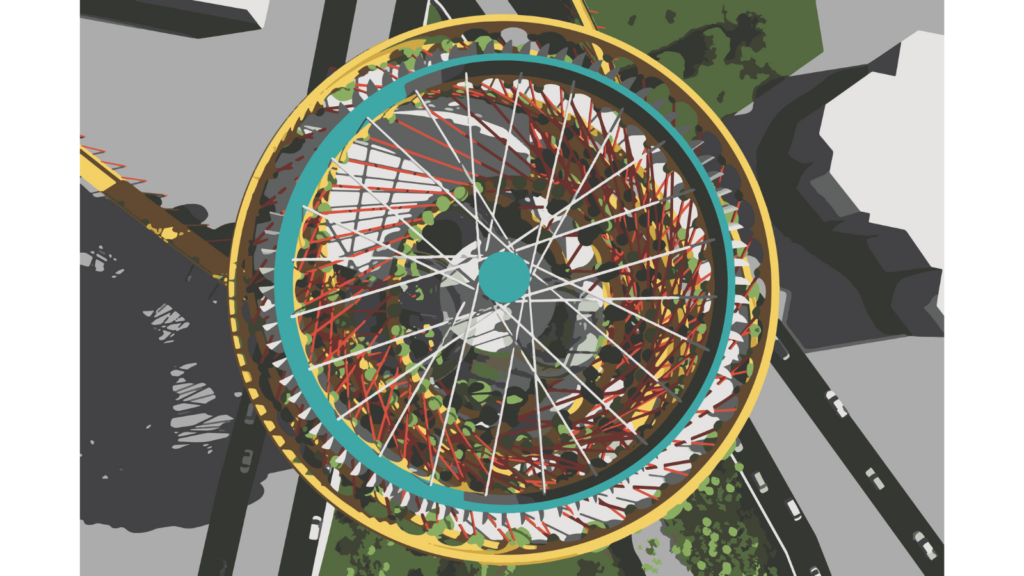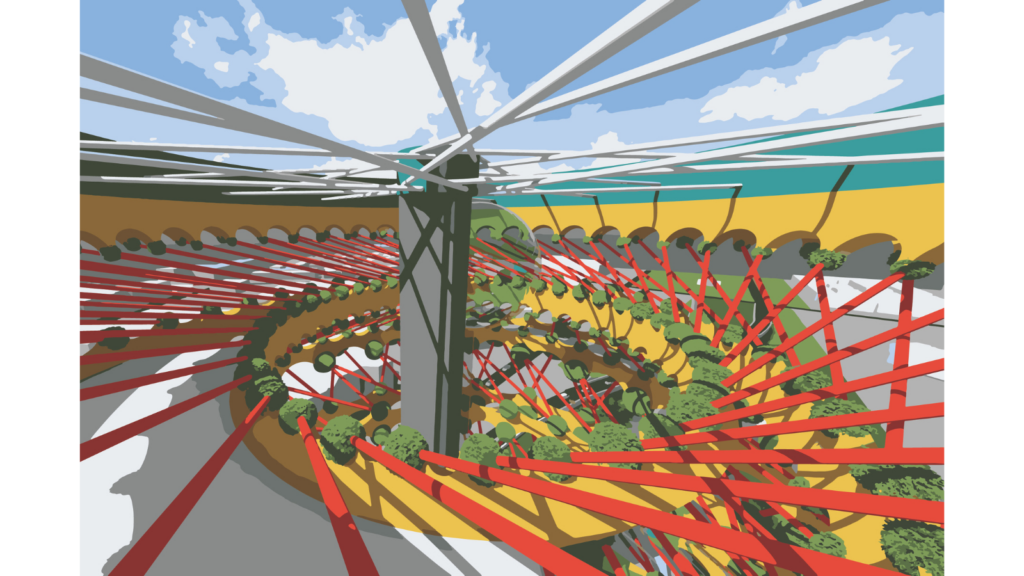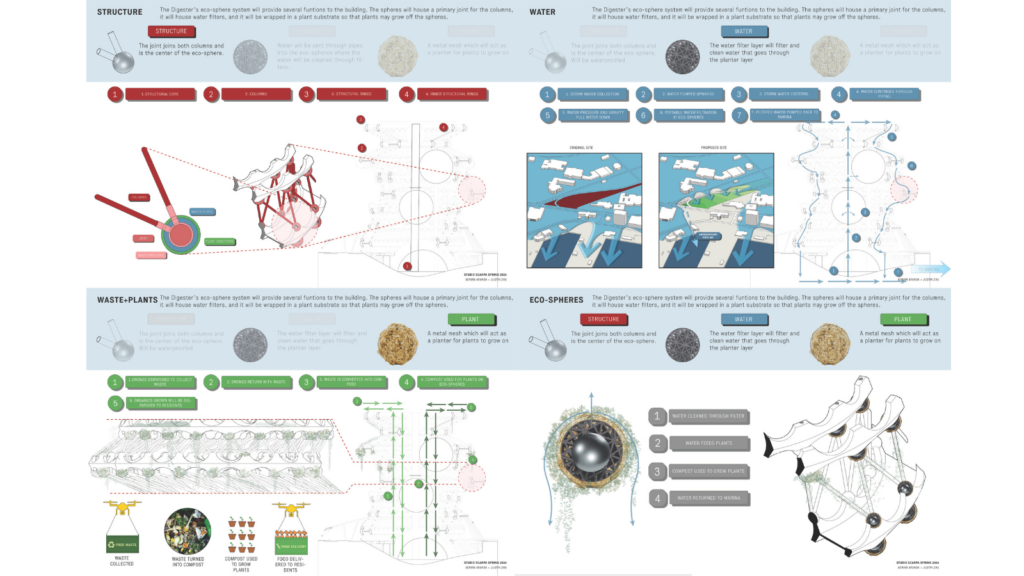
Adrian Aranda and Justin Zhu
University of Southern California, School of Architecture
Professor: Lawrence Scarpa
The Digester is a environmental center located on the strange and inhospitable site located in between the Marina Freeway and the Pacific Coast Highway. The project carves out the site in order to collect runoff water before it enters the Pacific Ocean via the adjacent Marina del Rey. By collecting this runoff water the Digester can cleanse the dirty water while also retaining it in the landscape’s soil in order to restore a portion of the natural wetlands. The Digester aims to mitigate environmental issues and to act as an icon for environmental protection.
Lawrence Scarpa
The Ballona Wetland has had its natural ecosystem irreversibly transformed by human development. In its natural state, the wetland was home to a 2,000 acre biodiverse habitat. Today, the wetlands are unrecognizable. In its place stands a strange landscape of concrete and asphalt. Nowhere is this more evident than where the Pacific Coast Highway and the Marina Freeway merge into Lincoln Boulevard. These major arteries have transformed the area into a no man’s land inhospitable to both humanity and nature.
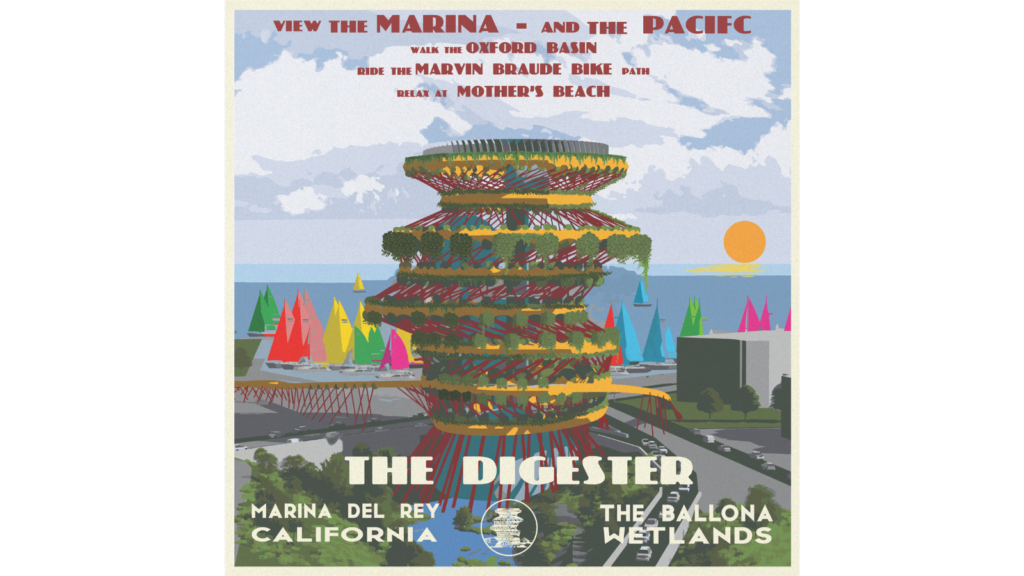
The environmental consequences of this transformation also affects the region’s water cycle. The area where the highways meet is located at the end of the region’s watershed, meaning water flows downstream and enters the Pacific Ocean at this site. Without natural soil and plants to hold the water, polluted runoff enters straight into the Marina’s waters.
The Digester aims to restore portions of the former Wetland in order to mitigate water pollution as well as aiming to create a welcoming area for both residents and nature. This will be accomplished through the system of “Ecospheres”.
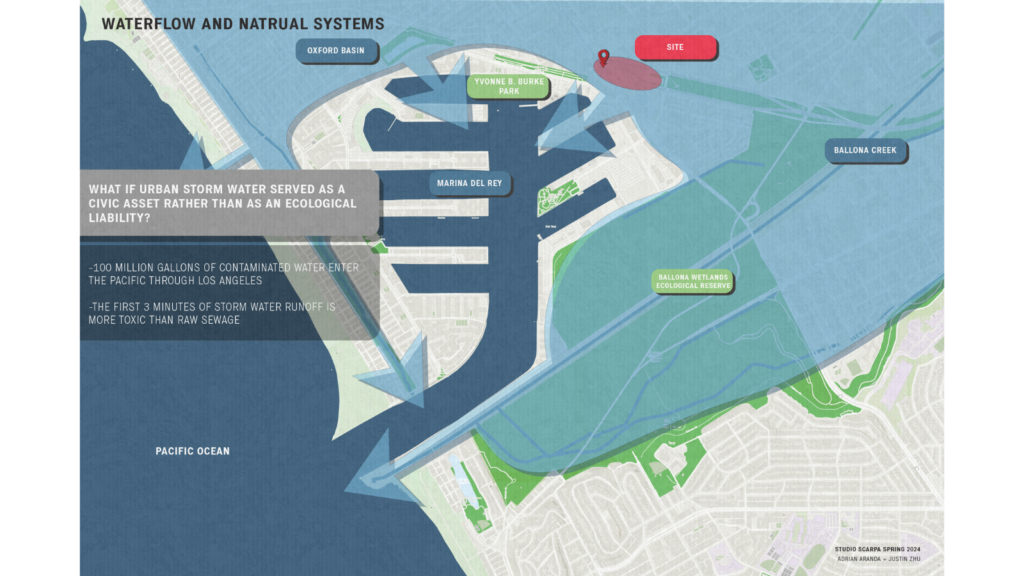
The Ecosphere system begins at the landscape. The stretch of land between the highways will be carved out into a ditch in order to collect runoff water from Los Angeles. Once collected water will be pumped to the Digester’s cisterns. From here gravity will pull the water down the Digester as the water flows through the Ecospheres.
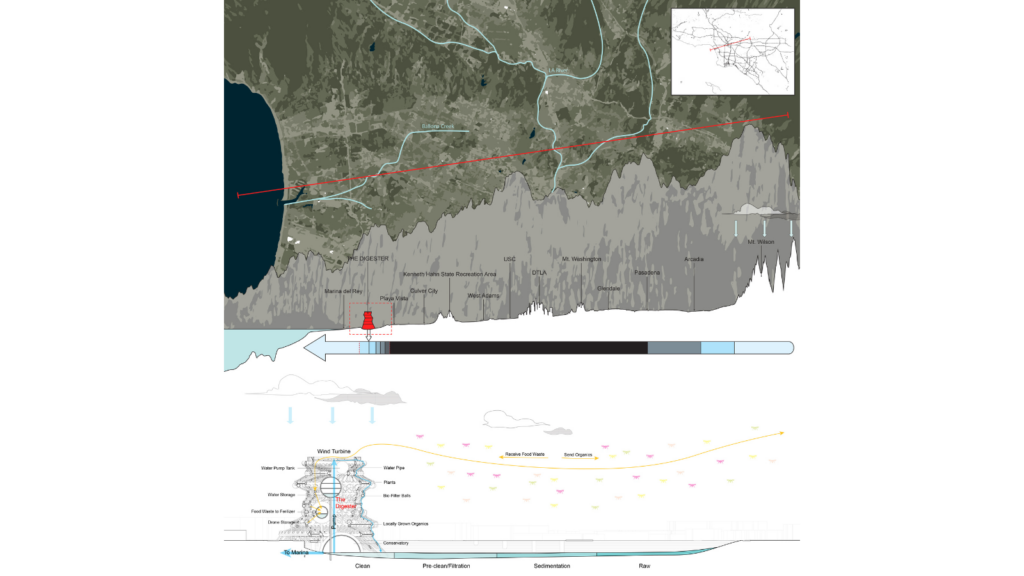
The Ecosphere will be constructed of three layers. At the center is the structural component, acting as a joint for the building’s columns. Next is the water filter, where water that flows down will be cleansed. The outermost layer will be a mesh for plants and crops to grow on. The compost will be made using the neighboring residents’ food waste through a drone collection system. After being cleansed, the water will be fed back into the Marina via underground ducts, returning clean water into the water cycle.
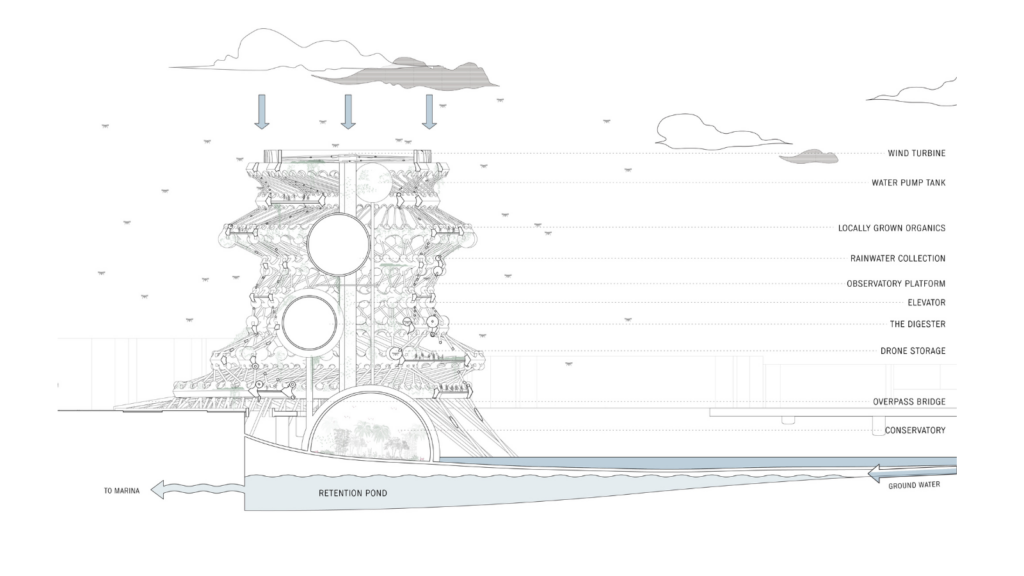
The Digester is designed to reflect the conflicted nature of the site. The building is both eating and cleansing the site, a dichotomy achieved through its design. The major ball joints and angled columns evoke a strange and machine feeling, a reflection of the site’s transformative past, car oriented nature, as well as the project’s own transformative properties. The Digester takes cues from AI generated images which were created through the input of mechanical and odd images. These inputs included greenery, drawings of Lebbeus Woods, gasometers, Transformers characters, and more. Major design cues are derived from the gasometer, a building completely indifferent to being hospitable. The Digester takes rings similar to those of the gasometer and stretches them out in different directions in order to create an iconic and out of the ordinary form that serves a purpose.
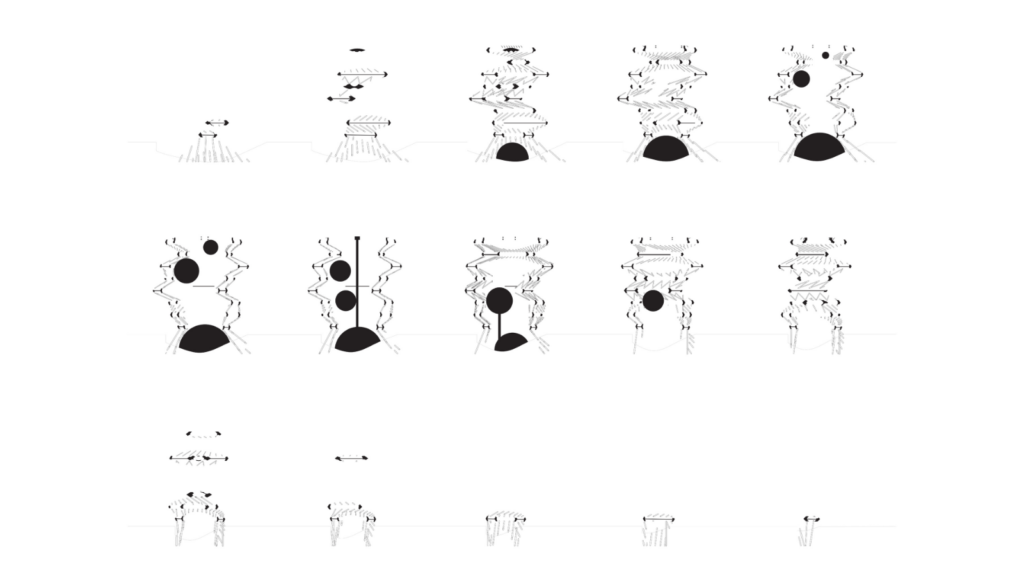
The Digester will not solve all of the ecosystem’s problems, but it aims to mitigate them and act as an icon for environmental protection.
